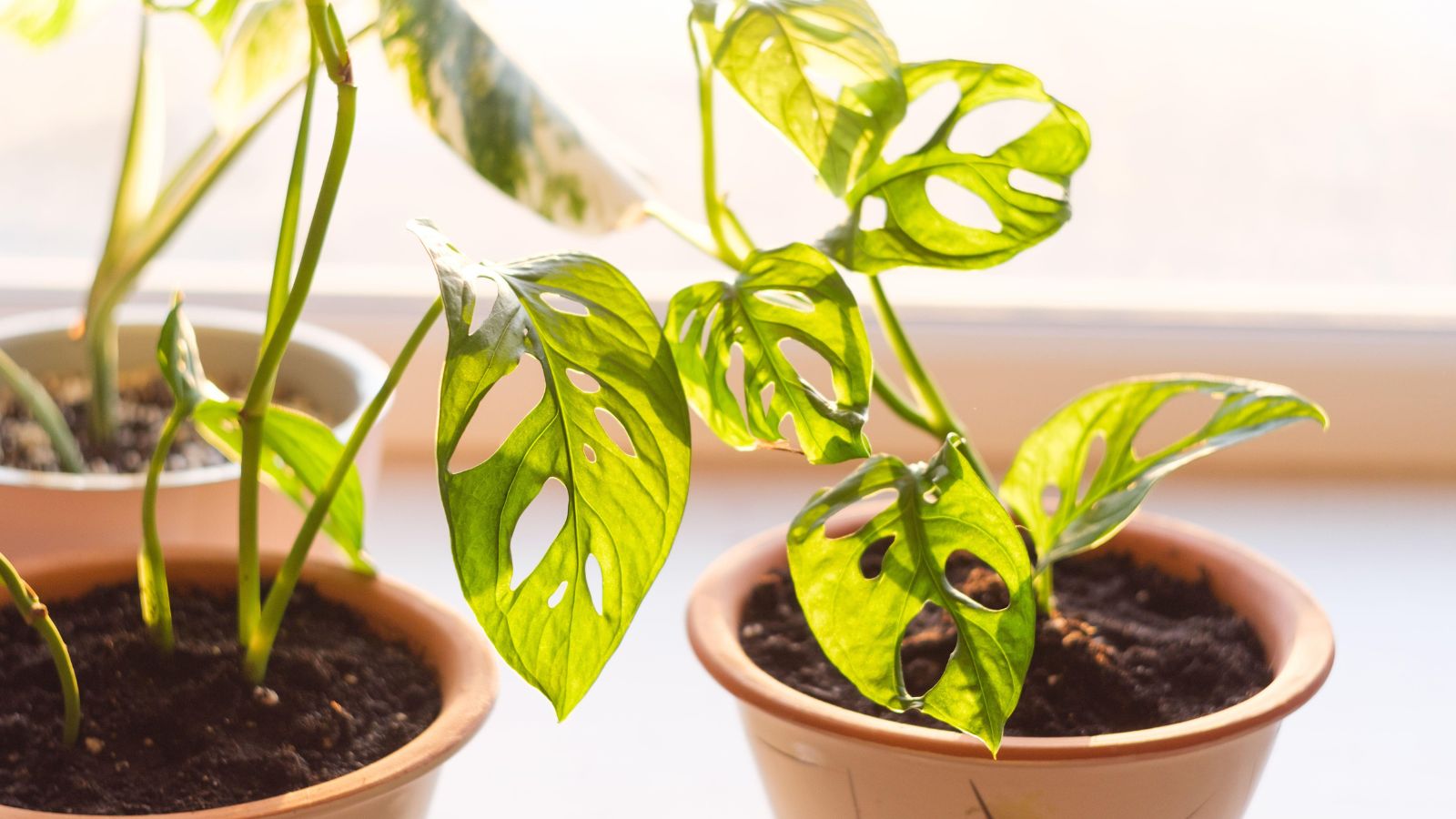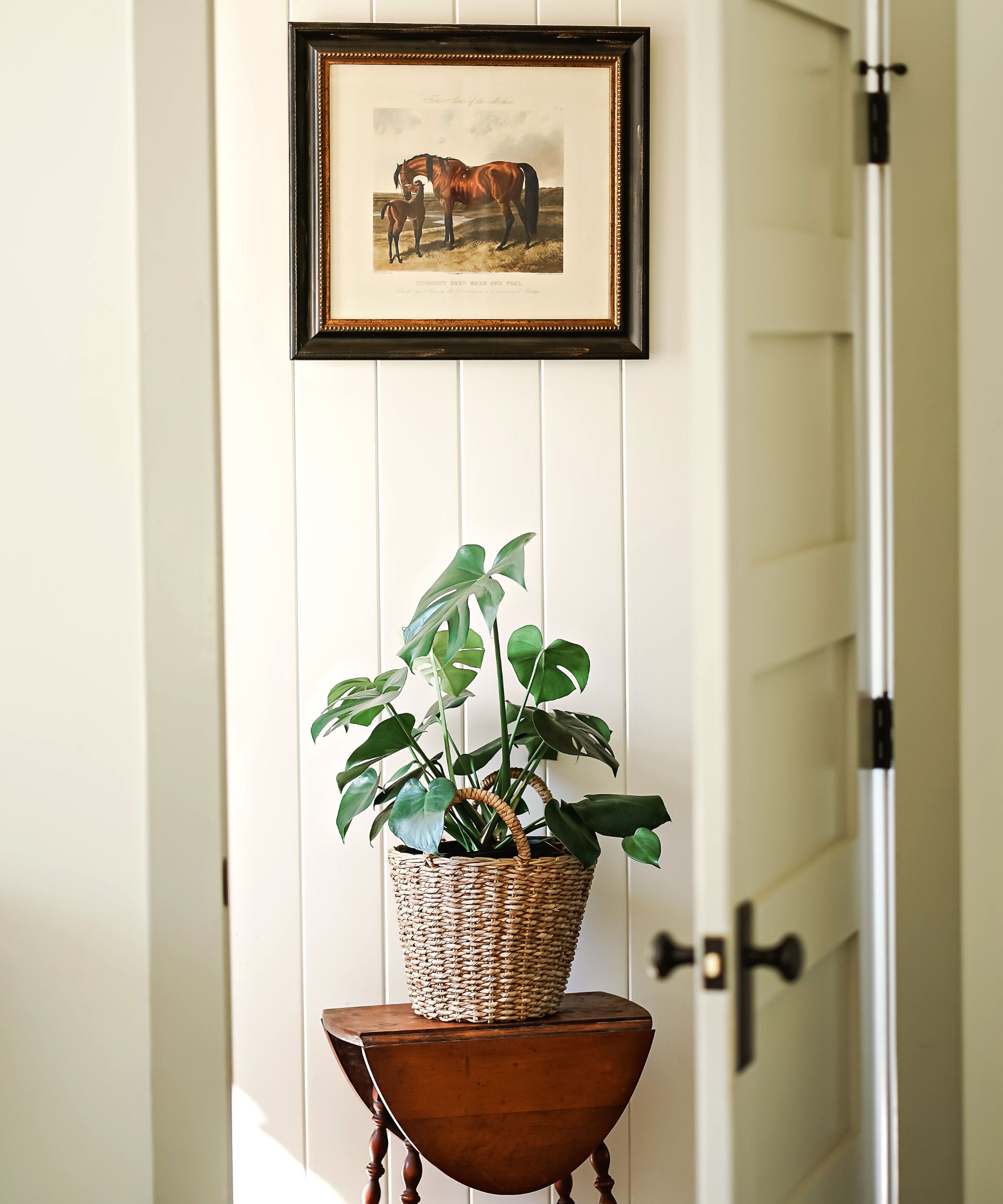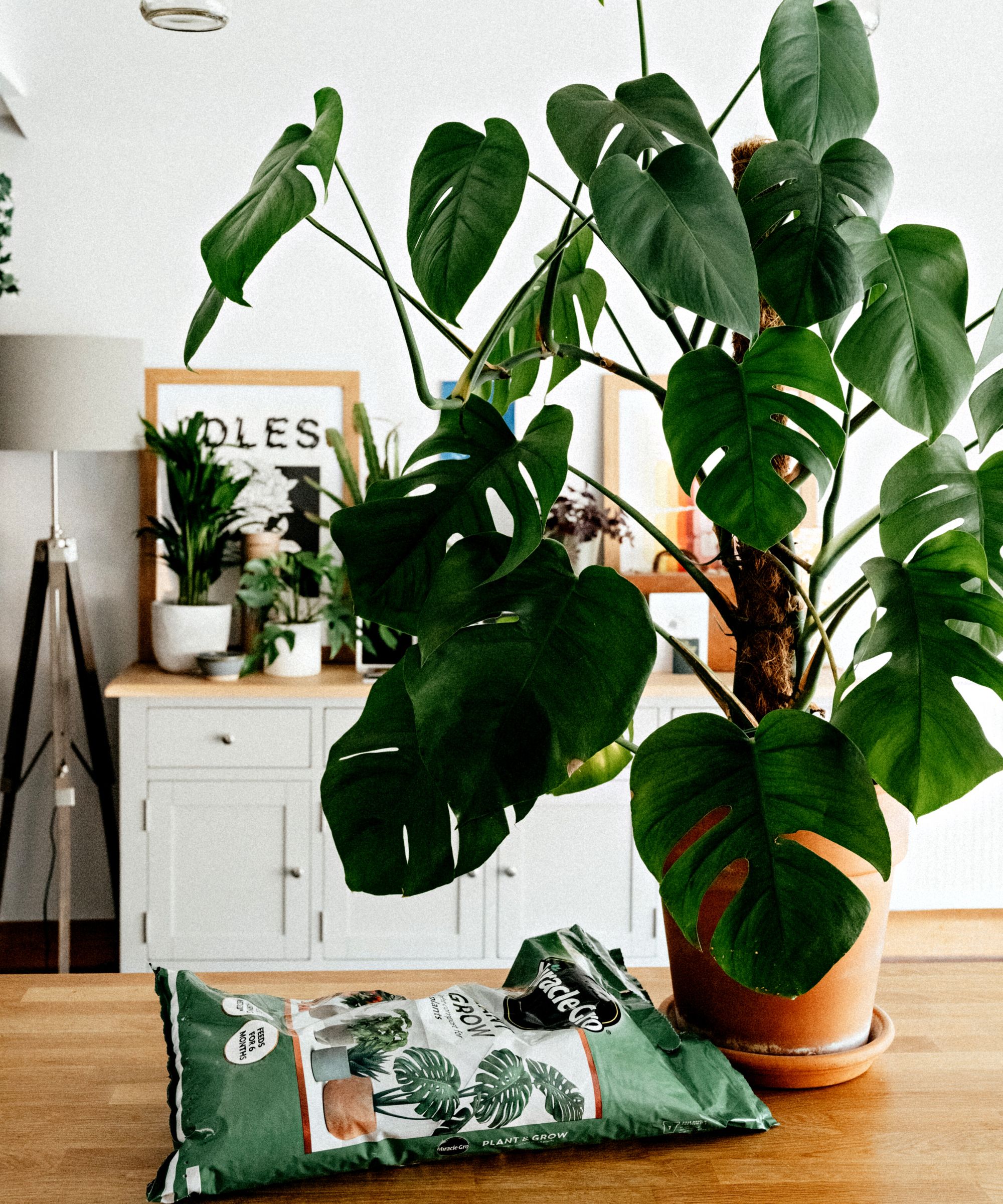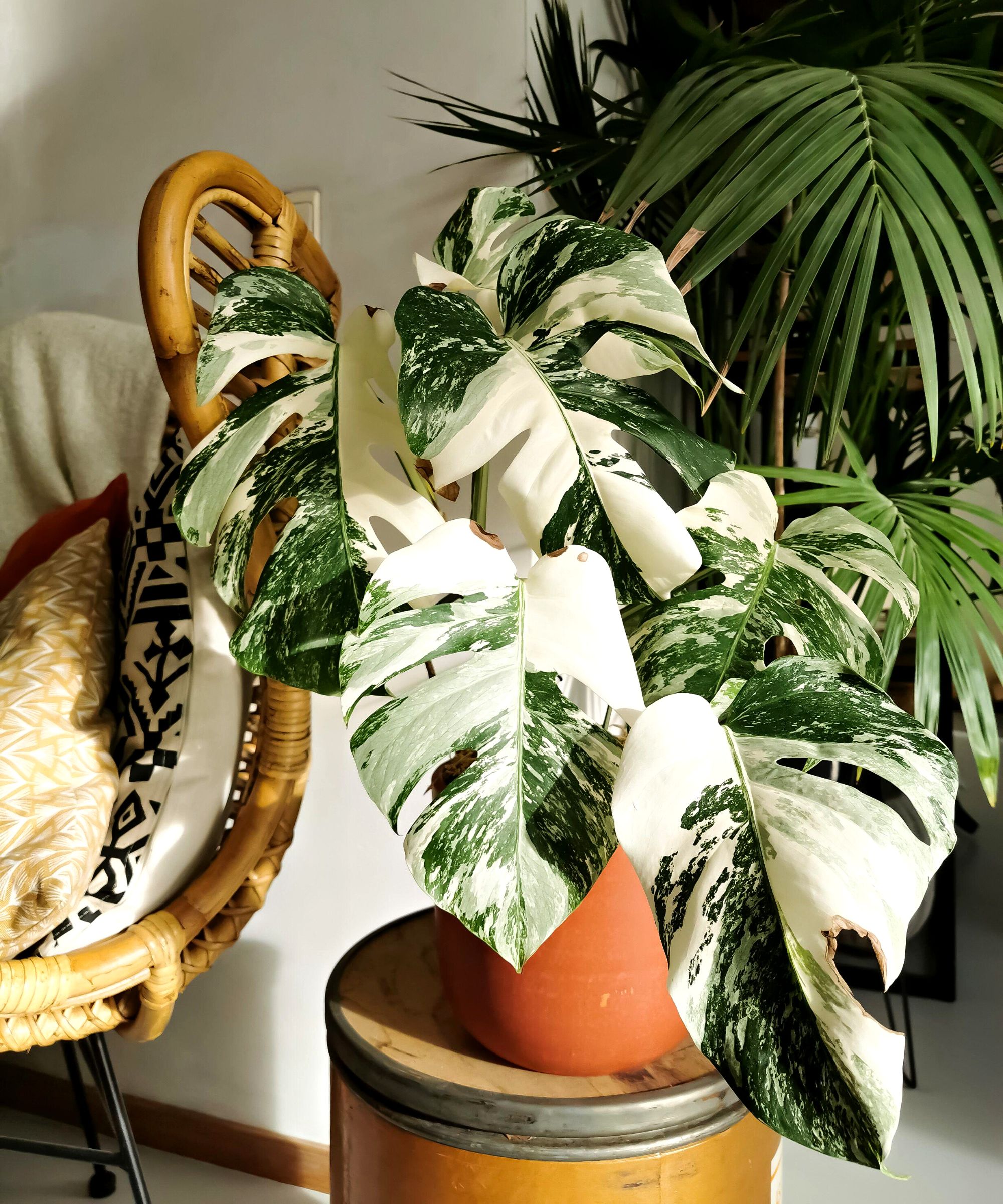When to repot a monstera – experts offer their top houseplant care tips
Repot your monstera plant to keep this iconic houseplant thriving year after year


Monstera Deliciosas, or Swiss cheese plants, are iconic houseplants that many plant lovers are proud to have in their home. With perfect mature plants reaching about 8ft tall, these are plants that require frequent repotting throughout they lives. So, how do you know when it is time to repot a monstera?
As an owner of some of the best indoor plants knows, repotting is a common care task that is essential to making sure even the best low-maintenance indoor plants thrive.
'Your monstera should be repotted every one to two years to keep it happy and to encourage growth. We’d recommend repotting your plant in very early springtime – as this is the time that your Swiss cheese plant will come into a bit of a growth spurt. But keep an eye on your plant – it’ll soon let you know if it needs a new, slightly roomier home,' says Jo Lambell, founder of Beards and Daisies and author of The Unkillables (available on Amazon).
Here, plant experts share their advice on the signs to look out for so that you know when to repot a monstera, the best way to repot this monster-sized plant, and why it is so important.
When to repot a monstera

Repotting a monstera can help to overcome a range of issues. Perhaps your monstera leaves are turning yellow, your plant is outgrowing its pot or recovering from an infestation of common houseplant pests?
'We always say that if you pay attention to your plants, they’ll tell you exactly what they need, and the iconic monstera is no different!' says Jo Lambell, founder of Beards and Daisies.
So what are the common signs?
Roots emerging from the container: 'If you spot the roots of your plant have started peeking through the drainage holes in its pot, then this is a pretty clear sign it’s begging you for a little more growing room,' says Jo.
Your monstera doesn't seem thirsty: 'You might also notice that your monstera doesn’t seem to be quite as thirsty as usual,' Jo continues. 'If you’re watering your plant, and the water is running straight through the soil, then it could mean that its roots need more space to spread, allowing them more room to soak up water.'
It's stopped growing: Lastly, if you’ve noticed that your plant doesn’t seem to be reaching its full potential and has stopped growing, it could be trying to tell you that it needs a little more room to grow.
How to safely repot a monstera

'If this is your first time repotting your monstera, it’s not as complicated as you might expect,' assures Jo.
Find the right size pot: this is key. 'We recommend picking something which will allow your plant plenty of room to grow over the next year or so.'
'Add a couple of inches of a well-draining compost, which promotes aeration to the roots and allows good drainage, to a pot approximately one to two inches wider in circumference than its existing home,' explains Kate Lindley, product manager at Baby Bio. Alternatively, make your own monstera potting mix.
'Remove your plant from its current pot by tipping the container to the side and gently teasing the plant and its roots free. Once you have successfully removed it from the pot, lay it on a clean surface and remove any compost mix gathered around the root ball.
'Cut off any dead roots that aren’t firm and plump using a clean, sharp pair of scissors or pruner. If you find the roots are soft and brown, your plant may be showing early signs of root rot – a result of being left to sit in waterlogged compost,' Kate says. 'The plant can be saved by trimming off any dead or dying roots back to where the root becomes firm and white again but be sure to use sterilized scissors when doing so.'
'Add a little of the potting mix to the bottom of the new container, then place the plant in the pot so that it sits comfortably level with the top of the container and fill the gaps around the side with more potting mix. Consider using a clear plastic pot so that you can monitor root health easily,' she adds.
The benefits of repotting a monstera plant

Most, if not all houseplants, need repotting at some time or another in order to help maintain growth, and stave off disease or early plant death.
'Most plants benefit from repotting once every other year, as upsizing a plant’s pot allows more room for growth, better air circulation to the root system, and prevents roots from becoming waterlogged or bound,' Kate clarifies.
'Monstera are well-known for their ability to reach monster-like heights, and repotting them is a great way to encourage their growth and give their roots plenty of breathing space,' says Jo Lambell of Beards & Daisies. 'Not only that, but it’s also a great opportunity to treat them to some delicious new nutrients in fresh soil.'
Do monsteras go into shock after repotting?
After repotting a monstera, it can go into shock. As this is normal, there is very little to worry about – in fact, transplant shock affects most plants to some degree.
In order to mitigate some of the effects of transplant shock, try to disturb the roots as little as possible during the move. This is easier if you have repotted your monstera before it becomes root bound or if you have avoided root rot.
Sign up to the Homes & Gardens newsletter
Design expertise in your inbox – from inspiring decorating ideas and beautiful celebrity homes to practical gardening advice and shopping round-ups.

Chiana has been at Homes & Gardens for two years and is our resident 'queen' of non-toxic living. She spends most of her time producing content for the Solved section of the website, helping readers get the most out of their homes through clever decluttering, cleaning, and tidying tips. She was named one of Fixr's top home improvement journalists in 2024.
-
 How to grow impatiens – garden experts reveal the secrets to growing this shade-tolerant, sparkling summer plant
How to grow impatiens – garden experts reveal the secrets to growing this shade-tolerant, sparkling summer plantBoth 'Busy Lizzie' and 'New Guinea' impatiens can thrive in shady yards
By Ellen Wells Published
-
 Charli XCX's dining room is a 'treasure-trove' of one-of-a-kind pieces – it's the most unique hosting space I've ever seen (and surprisingly replicable)
Charli XCX's dining room is a 'treasure-trove' of one-of-a-kind pieces – it's the most unique hosting space I've ever seen (and surprisingly replicable)The singer's Tudor-style dining room features eclectic furnishings, a mix of patterns and bright colors that all work together beautifully
By Hannah Ziegler Published